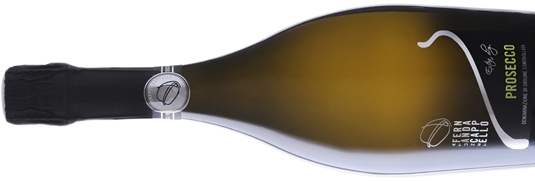Prosecco DOC
White grape variety of uncertain origin: if we want to give credit to Villafranchi, this variety came from the Trieste territory, probably taking its name from the town of Prosecco, where it was known under the name of Glera and where it would come later in the Treviso area. This author wrote, in fact, in 1773, in his essay "Tuscany Wine or memories over wines and Tuscan species" ... " Among those of Italy by the Romans was infinitely appreciated the wine Puccino, in Latin Puxinum, nowadays called Prosecco, which is still collected in the slope of the Contuel Mount, facing the Adriatic Sea, a few miles distant from Trieste ... "
It is said that to Empress Livia Augusta was sent the wine in earthenware amphorae from the port of Aquileia and that, thanks to its consumption she has arrived at the ripe old age of 82, describing it as "the most suitable wine for medicinal use".
It is said that to Empress Livia Augusta was sent the wine in earthenware amphorae from the port of Aquileia and that, thanks to its consumption she has arrived at the ripe old age of 82, describing it as "the most suitable wine for medicinal use".
Tasting Notes
At the sight it has a pale straw yellow colour with slight greenish reflections. Fine and persistent perlage.
To the nose and seductive aromas, of acacia and wisteria flowers, fruity and sweet, such as pear, apricot and peach: extremely fine and elegant sensations remain.
In the mouth it reveals a wide taste aromatic expression, that develops progressively in notes of fresh, live, lively, full-flavoured and with an aromatic persistence consistent with the nose, in a harmony of sensations.
To the nose and seductive aromas, of acacia and wisteria flowers, fruity and sweet, such as pear, apricot and peach: extremely fine and elegant sensations remain.
In the mouth it reveals a wide taste aromatic expression, that develops progressively in notes of fresh, live, lively, full-flavoured and with an aromatic persistence consistent with the nose, in a harmony of sensations.

When to drink
Its fresh softness makes it a wine of great pleasure: it has become worldwide the “aperitif” par excellence and it can be combined with "appetizer" and "finger food" of various types, but it is also appreciated for a meal.
With entrees (fish tartare, eggs and quiches, San Daniele ham), with first courses (white pasta with fish, pasta with vegetables, wild herb soups), with second courses especially of fish (steamed shellfish, raw fish, seafood, creamed codfish), but also with fresh cheeses of local pastures. Ideal with desserts, both dry and creamy.
Also recommended with the most precious fruits of the garden, such as the Radicchio di Treviso, whose slight bitter taste is perfectly balanced by the soft and fruity notes of this wine. It goes well with the asparagus and wild mushrooms, particularly porcini mushrooms.
The versatile character of this wine makes it perfect for pairing with ethnic dishes, from Thai to Japanese cuisine such as sushi, sashimi and all the Fushion recipes.
With entrees (fish tartare, eggs and quiches, San Daniele ham), with first courses (white pasta with fish, pasta with vegetables, wild herb soups), with second courses especially of fish (steamed shellfish, raw fish, seafood, creamed codfish), but also with fresh cheeses of local pastures. Ideal with desserts, both dry and creamy.
Also recommended with the most precious fruits of the garden, such as the Radicchio di Treviso, whose slight bitter taste is perfectly balanced by the soft and fruity notes of this wine. It goes well with the asparagus and wild mushrooms, particularly porcini mushrooms.
The versatile character of this wine makes it perfect for pairing with ethnic dishes, from Thai to Japanese cuisine such as sushi, sashimi and all the Fushion recipes.
